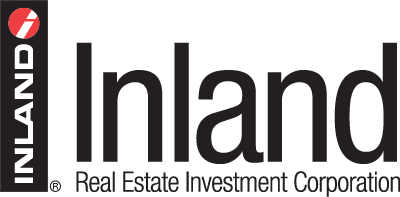Increasing NOI may offer a total return comprised of income and capital appreciation
Net operating income (NOI) is one of several key metrics used to measure the profitability and value of commercial real estate. NOI is a figure that appears on income and cash flow statements that excludes costs associated with financing and taxes, such as loan payments, capital expenditures, and depreciation.1 To calculate NOI, a property’s operating expenses are subtracted from its total revenue.
|
Net Operating Income: Total Revenue - Operating Expenses = NOI
|
NOI growth is typically achieved when a property’s revenue grows faster or at a rate higher than its operating expenses. Active property management can also lead to an increase in NOI even if operating expenses grow at the same rate or faster than the property’s revenue. Common ways to increase NOI, which vary by property type, include increasing rents and the rentable square footage of the property, reducing tenant turnover and vacancy, executing a proactive maintenance plan to reduce repairs, and efficiently consolidating expenses. The growth in a property’s NOI typically translates into an increase in its income and property value.
The capitalization rate, or cap rate, is a popular baseline metric that indicates the potential rate of return for a commercial real estate property based on the purchase price and the NOI generated by the property on an annual basis.2 The cap rate is calculated by dividing a property’s NOI by its current market value.
|
Capitalization Rate: Net Operating Income/Market Value = Cap Rate
|
Cap rates can be a useful tool in evaluating comparable properties within the same market area but should not be used as the sole indicator of a property’s expected performance. Cap rates are not created equal and widely vary depending on the property type, location and various economic factors. Occasionally, rising market prices will increase a property’s value, lowering its cap rate. This is called cap rate compression and typically indicates investor’s perceived belief that certain property prices will continue to rise. Reliance on cap rate compression and increasing market prices should not be the only determining factors used when evaluating commercial real estate.
Power of NOI Growth
The following chart is an illustration that demonstrates how consistent NOI growth over a seven-year period may positively impact property valuation.
|
Illustration Assumptions
|
This illustration does not represent a specific property type or geographic property location. The cap and other rates used were arbitrarily chosen for this illustration and may be higher or lower when evaluating a commercial real estate investment property. |
| Year 0 | Year 1 | Year 2 | Year 3 | Year 4 | Year 5 | Year 6 | Exit | |
| Revenue | $1,000,000 | $1,040,000 | $1,081,600 | $1,124,864 | $1,169,859 | $1,216,653 | $1,265,319 | $1,315,932 |
| Expenses | (500,000) | (512,500) | (525,313) | (538,445) | (551,906) | (565,704) | (579,847) | (594,343) |
| NOI | $500,000 | $527,500 | $556,500 | $586,419 | $617,952 | $650,949 | $685,472 | $721,589 |
| NOI Annual Growth Rate3 | 5.5% | 5.5% | 5.4% | 5.4% | 5.3% | 5.3% | 5.3% | |
| Sale Price4 | $13,744,551 | |||||||
| Purchase Price5 | $9,523,810 | |||||||
| Difference | $4,220,741 | |||||||
| Total Capital Appreciation Upon Sale | 44.32% | |||||||
|
Illustration Considerations
|
NOI growth is an important value driver for commercial real estate and may have a significant impact on a property’s value and return profile. Understanding the role NOI plays in a commercial real estate strategy can help potential investors better evaluate and analyze potential property performance.
Sources:
1Investopedia. Net Operating Income – NOI Definition. April 29, 2020.
2Investopedia. Capitalization Rate. June 30, 2020.
3The NOI Annual Growth Rate in this illustration assumes that expenses increase at a faster rate than property revenue causing a slight decrease in the rate from 5.5% to 5.3% when the property is sold.
4Calculated by dividing the exit NOI by the applicable cap rate.
5Calculated by dividing the year 0 NOI by the applicable cap rate.
The views expressed herein are subject to change based upon economic, real estate and other market conditions. These views should not be relied upon for investment advice. Any forward-looking statements are based on information currently available to us and are subject to a number of known and unknown risks, uncertainties and factors which may cause actual results, performance or achievements to be materially different from any future results, performance or achievements expressed or implied by these forward-looking statements.
Important Risk Factors to Consider
Investments in real estate assets are subject to varying degrees of risk and are relatively illiquid. Several factors may adversely affect the financial condition, operating results and value of real estate assets. These factors include, but are not limited to:
- changes in national, regional and local economic conditions, such as inflation and interest rate fluctuations;
- local property supply and demand conditions;
- ability to collect rent from tenants;
- vacancies or ability to lease on favorable terms;
- increases in operating costs, including insurance premiums, utilities and real estate taxes;
- federal, state or local laws and regulations;
- changing market demographics;
- changes in availability and costs of financing;
- acts of nature, such as hurricanes, earthquakes, tornadoes or floods
- economic risks associated with a fluctuating U.S. and world economy, including those resulting from the novel coronavirus and resulting pandemic.




